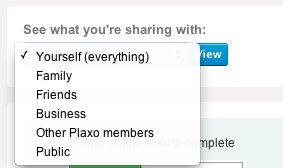There are two things in particular that everyone struggles with on Twitter. Here are my humble suggestions as to how Twitter can do something about it.
1. The Asymmetrical Direct-Message Conundrum
What it is: User A is following user B, but User B is not following User A. User B direct-messages User A, and when User A tries to reply to that direct message, they cannot, because User B is not following them.
Fix: Give User B a way to set a message that will DM User A with some contact info automatically. Something like “Unfortunately I can’t receive direct messages from you, but please contact me at blahblah@domain.blah.” A more complicated fix that might help would be to allow User B to set an optional exception for receiving direct messages for anyone User B has direct-messaged (but whom User B is not following), for a given amount of time or a number of messages. It’s not perfect, but it will handle the majority of these occurrences.
2. The “DM FAIL”
What it is: User A means to send a direct message to User B, but accidentally tweets it to the whole wide world.
There are a couple of variations:
a) The SMS Reflex Response: User A gets a text from Twitter with a direct message from User B; User A types a reply and hits “send” before realizing it’s from Twitter and should’ve had “d username” (or now “m username” ?!?) typed before it.
b) The Prefix Fumble: User A is in same situation as above, but does realize it’s a text from Twitter — however, since they’re so used to thinking of Twitter usernames in the form of “@username” they type that out, forgetting they should be using the other prefix instead.
Fix: allow me to turn *off* the ability to create a tweet via SMS; and reply to my SMS text with a “hey you can’t do that” reminder if I forget I have it turned off and try doing it anyway. Let me turn it on and off via SMS text with commands, so if I’m stuck on a phone where I need to tweet that way, I can still do it. But so many people have smart-phones with Twitter apps, there’s no reason why I can’t receive SMS from Twitter without being able to create via SMS as well.
There you go, Twitter! My gift to you :-)
(By the by, I have no illusions that I’m the only one thinking about how to solve for these problems, and the bright designers at Twitter probably already have better solutions. But … you know, I thought I’d share, just in case … )



